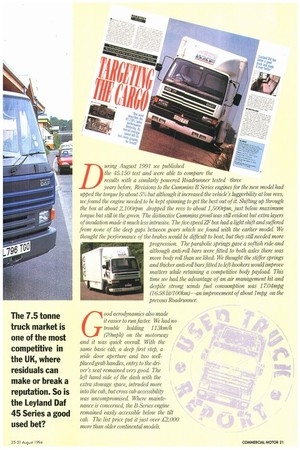D uring August 1991 we published the 45.150 test and were
Page 23

If you've noticed an error in this article please click here to report it so we can fix it.
able to compare the results with a similarly powered Roadrunner tested three years before Revisions to the Cummins B Series engines for the new model had upped the torque by about 5% but although it increased the vehicle's luggerbilily at low revs, we found the engine needed to be kept spinning to get the best out of it. Shifting up through the box at about 2,100rpm dropped the revs to about 1,5001m, just below maximum torque but still in the green. The distinctive Cummins growl was still evident but extra layers of insidati on made it much less intrusive The five-speed ZF box had a light shift and suffered from none of the deep gaps between gears which we found with the earlier model We thought the performance of the brakes would be difficult to beat, but they still needed more progression. The parabolic springs gave a softish ride and although anti-roll bars were fitted to both axles there was more body roll than we liked We thought the stiffer springs and thicker anti-roll bars fitted to left-hookers would improve matters while retaining a competitive body payload. This time we had the advantage of an air management kit and despite strong winds fuel consumption was 1704mpg (16.58 lit/100km)—an improvement of about lmpg on the prevous Roadrunner.
















































































